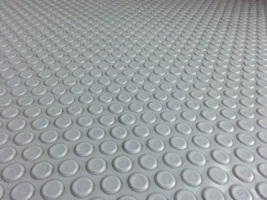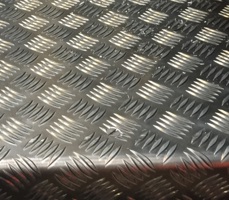Metal and Profiled Surfaces Slip Resistance
See our systematic approach to Slip Risk Assessment and Prevention
Metal and profiled floors look non-slip, durable and easy-to-clean. However, many are slippery-when-wet
Metal floor surfaces can be incorrectly specified in areas that will be foreseeably contaminated, areas where hygiene is important or areas prone to excess wear
Many well-intentioned people wrongly specify and fit profiled surfaces in high risk areas expressly to prevent slips
Profiled surface users may operate with a false assumption of increased grip and take less care, increasing the risk of slipping
Dealing with Slippery Metal and Profiled Surfaces
- Identify all metal, profiled and profiled-metal pedestrian surfaces that could become wet or contaminated in a slip, trip and fall risk assessment
- Check if the surface is slippery-when-wet by
- asking users if it feels slippery underfoot when wet (Note that this check should not be carried out wearing slip-resistant footwear)
- using published data such as research reports, safety files, manufacturers data and test results
- having the surface slip resistance tested. Expert advice should be sought and it may be necessary to send a sample of the surface to a laboratory for ramp testing
- Change slippery-when-wet surfaces where possible. This may be simple where surfaces have planned replacement cycles. Ensure that replacement surfaces provide the required slip resistance
- Repair surfaces where possible to improve grip. This could include the proper application of conformable slip resistant surfaces (noting their often very limited life span). On stairs, steps, use visibly contrasting slip resistant nosings
- Consider using matting if effective at reducing slip risk and not an additional risk
- Control contamination risks, for example, stop the surface getting wet
- Risk assess the requirement for slip resistant footwear
- Consider as a last line of defence the use of safety signs and warning markings if there is a fall risk
Metal Surfaces Slip Resistance
CIRIA C652 2010 Update, page 62, shows a "high slip potential" especially when wet for
- aluminium sheet
- aluminium chequer plate
- mild steel plate
- mild steel durbar plate
- mild steel cold formed planks type "BP"
See HSA advice on Slippery Surfaces
Profiled Surfaces Slip Resistance
Profiled surfaces have a raised surface pattern. They come in a range of materials including metal, wood, rubber, ceramic

- HSE UK's Kitchen Floors Slip Resistance rates textured or studded vinyl or rubber as high slip risk especially when wet
- CIRIA C652 2010 Update says "Any increase in friction offered by adding a profile to a floor will be heavily dependant on
- the pattern of the profile,
- the soiling pattern of the pedestrian's footwear and
- the level of wear on both floor and shoe sole"
See HSA advice on Slippery Surfaces
Profiled-Metal Surfaces Slip Resistance
- HSE UK's Kitchen Floors Slip Resistance rates metal profile (all patterns) as high slip risk especially when wet
- "There is considerable anecdotal evidence that some in-service profiled surfaces pose a significant slip risk" especially when wet according to HSL’s “study of the slip characteristics of metal flooring materials”
- CIRIA C652 2010 Update says "Any increase in friction offered by adding a profile to a floor will be heavily dependant on
- the pattern of the profile,
- the soiling pattern of the pedestrian's footwear and
- the level of wear on both floor and shoe sole"
Aluminium Chequerplate Slip Resistance
There is a misconception that aluminium chequerplate offers good slip resistance
- CIRIA C652 2010 Update, page 62, shows aluminium chequer plate as "high slip potential" especially when wet
- Aluminium chequerplate “offers poor slip-resistance if wet or contaminated” according to Safer surfaces to walk on (CIRIA C652, available at www.ciria.org)
- Case studies show improvements after dealing with aluminium chequerplate
- Abattoir reduced slip costs from £207,800 to £136,000 over three years by improvements including removal of chequerplate
- “Airport carries out a wide-ranging review of pedestrian slip risks” in “Getting to grips with slips and trips”
- “Mobile work equipment and workplace vehicles” in “Getting to grips with slips and trips”
- Workshop successfully treats “especially slippery” chequerplate metal stairs in “Slipping on dust in machinery workshop”
See HSA advice on Slippery Surfaces

